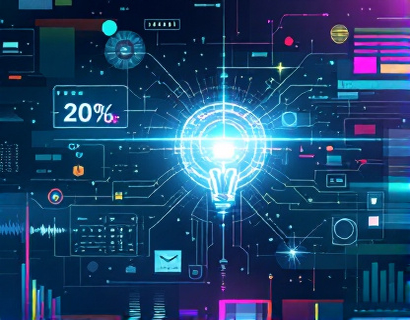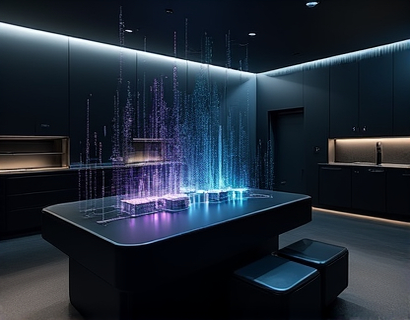Mindful Escape: Harnessing Cutting-Edge Meditation Technology for Stress Relief and Relaxation
In today's fast-paced world, stress has become an almost constant companion for many individuals. The relentless demands of work, family, and social obligations can lead to mental fatigue, anxiety, and a general sense of unease. Finding effective methods to manage stress and achieve a state of relaxation is more crucial than ever. One promising approach is the integration of advanced meditation technology, designed to guide users through the process of mindfulness and relaxation. This article explores the transformative potential of these cutting-edge tools, offering insights into how they can be harnessed to promote mental well-being and foster a more balanced life.
The concept of mindfulness is rooted in ancient practices but has gained significant traction in modern psychology and wellness communities. Mindfulness involves being fully present and engaged in the current moment, without judgment. It encourages a deep awareness of thoughts, feelings, and bodily sensations, allowing individuals to respond to stressors in a more thoughtful and less reactive manner. Meditation, a key component of mindfulness, provides a structured way to cultivate this awareness through various techniques, including focused attention, open monitoring, and guided visualizations.
Cutting-edge meditation technology has revolutionized the way people approach mindfulness and stress relief. Advanced software platforms now offer a range of tools and features designed to make meditation accessible and effective for everyone, regardless of their experience level. These platforms typically include guided meditation sessions, calming soundscapes, and interactive mindfulness tools. The goal is to create an immersive and supportive environment that helps users transition from a state of stress to one of deep relaxation and mental clarity.
Guided Meditation Sessions
One of the most powerful features of modern meditation software is the availability of guided meditation sessions. These sessions are led by experienced instructors who walk users through each step of the meditation process, providing clear instructions and gentle encouragement. The guided nature of these sessions is particularly beneficial for beginners, as it helps to build confidence and familiarity with meditation techniques.
Guided meditations can focus on various themes, such as stress reduction, sleep improvement, emotional balance, and self-compassion. Each session is carefully crafted to address specific needs and goals, ensuring that users can find relevant content to support their personal journeys. For instance, a stress reduction session might involve deep breathing exercises combined with visualizations of peaceful environments, helping to lower cortisol levels and promote relaxation.
The convenience of accessing these sessions anytime and anywhere is a significant advantage. Whether it's during a lunch break, before bed, or in a quiet corner of the office, users can engage in a guided meditation to reset their mindset and reduce stress. The consistency of practicing regularly, even for short periods, can lead to substantial improvements in mental well-being over time.
Calming Soundscapes
Sound plays a crucial role in meditation, as it can significantly influence the brain's state and emotional response. Calming soundscapes, such as nature sounds, ambient music, and white noise, are integral components of many meditation platforms. These auditory elements help to create a serene atmosphere, masking distracting noises and fostering a sense of tranquility.
Nature sounds, like the gentle rustling of leaves, the soothing flow of a river, or the chirping of birds, can transport users to a peaceful natural setting, reducing feelings of anxiety and promoting relaxation. Ambient music, with its gentle rhythms and harmonious tones, can enhance the meditative experience by inducing a state of deep calm. White noise, which consists of a uniform mixture of sounds, is particularly effective in blocking out disruptive noises and creating a consistent, soothing backdrop.
Many meditation software platforms offer a wide library of soundscapes, allowing users to customize their listening experience based on their preferences and the specific mood they wish to cultivate. The ability to adjust volume levels and mix different sound elements provides a personalized approach to creating the ideal environment for meditation and relaxation.
Mindfulness Tools
Beyond guided sessions and soundscapes, modern meditation software includes a variety of mindfulness tools designed to enhance the overall practice. These tools can help users develop a deeper understanding of their thoughts and emotions, improve focus, and cultivate a greater sense of inner peace.
One such tool is the breath awareness exercise, which involves focusing attention on the breath to anchor the mind in the present moment. By monitoring the natural rhythm of inhalation and exhalation, users can learn to let go of distracting thoughts and return to the present whenever their mind wanders. This practice not only reduces stress but also enhances concentration and mental clarity.
Another useful tool is the body scan, which guides users through a systematic awareness of different body parts, starting from the toes and moving up to the head. This practice helps to release physical tension, promote relaxation, and increase body awareness. By becoming more attuned to physical sensations, users can better identify and address sources of stress and discomfort.
Journaling features are also common in meditation software, allowing users to reflect on their experiences, thoughts, and feelings. Writing down insights and emotions can provide valuable insights into patterns and triggers, facilitating personal growth and self-awareness. Some platforms even offer prompts and questions to guide the journaling process, making it easier for users to derive meaningful benefits from this practice.
Integrating Meditation into Daily Life
One of the key advantages of using meditation software is its flexibility and ease of integration into daily routines. Unlike traditional meditation classes that require a specific time and place, these platforms offer the freedom to practice whenever and wherever it suits the user. This flexibility is essential for building a consistent meditation habit, which is crucial for reaping the long-term benefits of mindfulness practice.
Many users find it helpful to set aside a dedicated time each day for meditation, such as in the morning to start the day with a clear mind or in the evening to unwind before sleep. However, even a few minutes of meditation throughout the day can be beneficial. For example, taking a moment to practice deep breathing during a work break or engaging in a brief mindfulness exercise while commuting can provide immediate stress relief and enhance overall well-being.
To further support users in establishing a regular practice, some meditation software includes reminders and tracking features. These tools can send notifications to encourage users to meditate at their chosen times and track progress over time, providing a sense of accomplishment and motivation to continue.
Scientific Backing and Benefits
The effectiveness of meditation and mindfulness practices is supported by a growing body of scientific research. Studies have shown that regular meditation can lead to significant reductions in stress, anxiety, and depression. It can also improve sleep quality, enhance cognitive function, and boost the immune system.
Neuroimaging studies have revealed that meditation can alter brain structure and function, particularly in areas related to attention, emotional regulation, and self-awareness. For instance, the prefrontal cortex, associated with positive emotions and decision-making, tends to become more active in regular meditators. Additionally, the amygdala, which processes fear and stress, shows reduced activity, leading to a more resilient and calm response to challenging situations.
Moreover, meditation has been shown to increase gray matter density in the hippocampus, a region critical for learning and memory, while reducing inflammation in the body. These physiological changes contribute to a range of benefits, from improved mental health to better physical health outcomes.
Creating a Supportive Environment
While meditation software provides powerful tools for individual practice, creating a supportive environment can further enhance the meditative experience. This involves setting up a dedicated space for meditation, free from distractions and interruptions. The environment should be comfortable, with a quiet atmosphere and soft lighting, if possible.
Using cushions or a meditation chair can improve posture and comfort during sessions, allowing for longer periods of focused practice. Incorporating elements that promote relaxation, such as plants, candles, or essential oils, can also enhance the sensory experience and deepen the sense of calm.
For those who prefer group meditation or community support, many meditation platforms offer online communities and forums. These spaces allow users to connect with others, share experiences, and gain insights from a diverse range of perspectives. Participating in virtual group meditations can also provide a sense of connection and accountability, motivating users to maintain their practice.
Conclusion
In an era where stress and mental fatigue are increasingly common, harnessing the power of cutting-edge meditation technology offers a promising path to relaxation and well-being. Through guided sessions, calming soundscapes, and mindfulness tools, these platforms empower individuals to cultivate a more peaceful and balanced mind. By integrating these practices into daily life, users can experience profound benefits, from reduced stress and anxiety to improved mental clarity and emotional resilience.
While the journey to a mindful and relaxed state is personal and unique to each individual, the tools and resources provided by modern meditation software make it more accessible and effective than ever before. Embracing this technology is not just a step towards personal well-being but a commitment to living a more fulfilling and purposeful life.










































